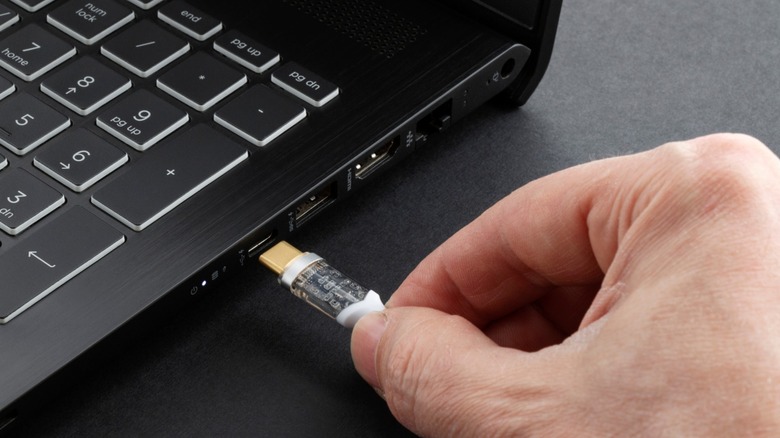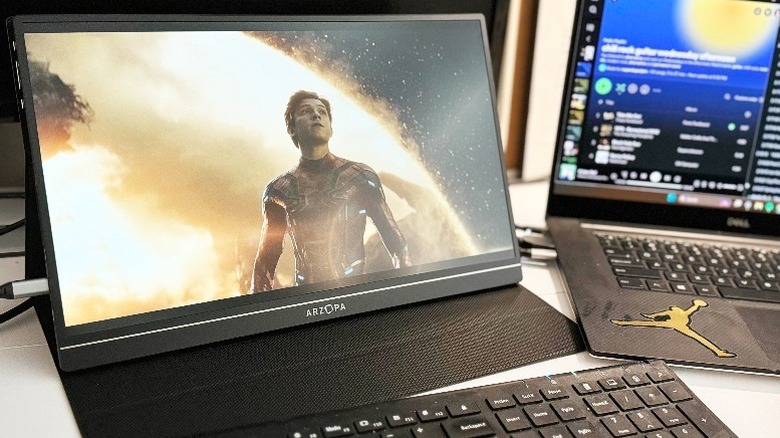Can You Power A Monitor By Plugging It Into Your Computer's USB Port?
Thin and light laptops now pack in enough performance to get you by most CPU or GPU-intensive tasks you throw at them, and yet, a few bucks spent on laptop accessories can skyrocket your productivity. An external monitor is inarguably the most effective way to do so, allowing you to view and work with multiple app windows without having to furiously alt-tab every few seconds.
Setting up an external monitor is straightforward — you hook it up to a power source and connect it to your laptop or desktop over HDMI or DisplayPort. This works well if you often dock your laptop in a designated workspace, but most monitors simply aren't portable enough, given their size and the fact that you would need to carry around a bulky power adapter. Seeing how universal and convenient USB-C has become, the idea of connecting and powering an external display using just one cable must have struck your mind, but can it actually be done?
The short answer is yes, but you will need a compatible display as well as a relatively modern laptop that offers this functionality. With exponential leaps in charging speeds and data transfer rates, the right USB-C port and cable can not only carry a video signal to a portable monitor but also power it over the same connection. Here's how to check if your laptop can power a monitor via USB-C and what to look for when shopping for one.
Exploring plug and play portable monitors
A quick search on Amazon reveals several listings for portable monitors from various brands, often coming in at sizes quite similar to most laptop screens. This way, you're essentially doubling the screen real estate without being affixed to a traditional desk setup. Some of these options even offer touchscreen functionality, which can open interesting opportunities for working with interactive content.
However, it's important to go through each of the options you're considering and look at how the portable monitor is being powered. Products like the Arzopa Portable Monitor that we went hands-on with feature this functionality, meaning you get a fully working external display powered by USB-C and displaying a video feed using the same connection. Displays that support both video and power over USB-C will list this feature explicitly, so be sure to look for it in the tech specs section.
A plug-and-play portable monitor is only half the equation — in order to use USB for displays, you will also need to make sure your laptop features a USB-C port with both Power Delivery and DisplayPort Alt Mode. Most modern laptops, including MacBooks, offer this convenience, but it's best to look for this functionality by visiting the product page. You can also directly connect a portable display to a smartphone or handheld consoles like the Nintendo Switch — although certain scenarios may have you relying on an external power source such as a power bank.

